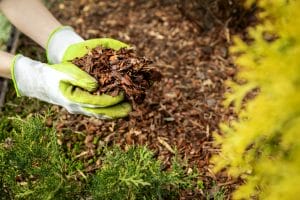If you enjoy having trees growing on your property, you will want to keep them in a healthy and safe condition. The best way to achieve this is by using an experienced, qualified arborist to carry out routine, annual lopping and maintenance work on your trees.
But how do you help your trees to recover from their makeover once the work is complete? Read on for some helpful information on how to care for your trees post-pruning.
1. Care for Pruning Wounds
It’s always better to have your trees pruned during the cooler months of the year when there is less insect activity and the trees are not actively growing. Pruning at this time of year keeps pest infection rates down and reduces stress on the trees.
Although it’s necessary to keep your trees healthy and to encourage good growth and fruiting, lopping or pruning creates wounds on the trees’ branches that can take time to heal. These wounds can precipitate the entry of diseases and pathogens, which could damage or even kill the tree.
Trees have their own natural method of healing. They grow growing new tissue over the pruning wounds, creating a natural barrier to disease and decay. The new growth stems from a part of the tree called the ‘branch collar’, which is the swollen area of tissue on the tree trunk from which the branch grows. An experienced arborist will always ensure that the branches are lopped in such a way that the branch collar is left intact and in place, causing minimal damage and therefore enabling the tree to heal itself.
If you decide to carry out a little light pruning yourself between the arborists’ visits, always wash your pruning tools in a mild disinfectant solution before and after using them. This helps to prevent the spread of diseases between trees.
2. Don’t Apply Wound Dressings
Although gardeners traditionally applied wound dressings, such as latex paint or creosote, to pruning wounds, arborists no longer recommend wound dressings. Sealing the wood with a wound dressing merely traps moisture inside, which encourages the growth of fungus and predisposes the wood to rotting. In turn, fungus and wood rot often provide an entry point for insect pests and airborne diseases.
Don’t panic if your trees begin to ‘bleed’ sap immediately following lopping. This is to be expected, and the exudate should stop weeping within a day or so of the tree being pruned.
If trees in your garden have been pruned to remove diseased branches, ask your arborist whether you should lightly paint the pruning wounds with a fungicide or insecticide product as a preventative measure. However, no other form of wound dressing should be used.
3. Encourage Rehydration
Pruning causes stress to trees. A good way of helping to combat this stress is to make sure that the trees are well-hydrated post-lopping, especially during periods of dry weather. After pruning, your trees will put out new shoots, and it’s important to provide this new growth with plenty of water. If you have fruit trees, you may want to add a small amount of suitable fertiliser to the water to boost new leafy growth.
Before watering, check that the soil around the tree’s base is not compacted, otherwise the water will simply run away and the tree will gain no benefit from it. You can aerate the soil by loosening it with a garden fork.
Help Your Trees to Grow After Pruning
Proper care after pruning is essential to keep your trees healthy. Whether it’s regular maintenance or specific needs like palm tree removal, the experts at All About Trees are here to help. For advice on pruning, removal, and other tree care, chat with our friendly team today!



